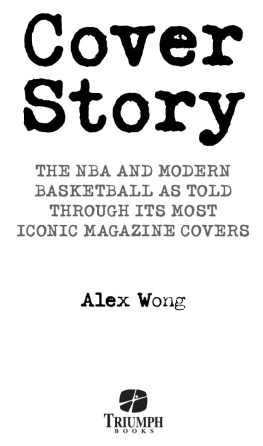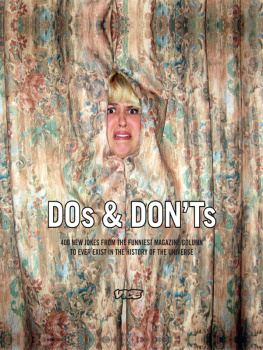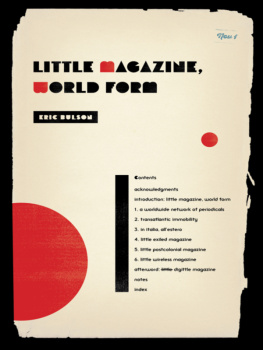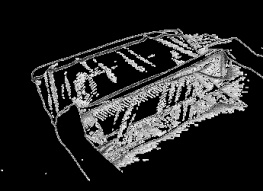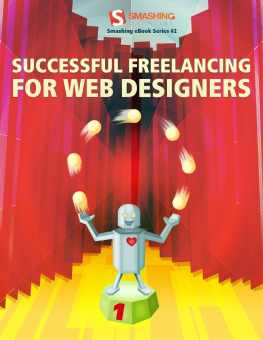Mapping the Magazine
The media, and more recently journalism, have provided rich areas of study for many years but magazines, perhaps the most prolific single medium, have been largely ignored. Mapping the Magazine aims to redress the balance with an unprecedented collection of original, scholarly, detailed but wide-ranging examinations of the magazine form. Drawing on a variety of theoretical approaches and a wealth of titles from around the world, the contributions demonstrate just how significant the magazine has been, and continues to be, in the realm of journalism and cultural production.
From the science magazines of the Victorian era to women's magazines of South Africa and Israel, via rock music and photojournalism past and present, the material in Mapping the Magazine illuminates and explores the all-encompassing, global and historical nature of the subject matter.
Some of the most notable names in the field of magazine studies, including John Hartley, Sammye Johnson, David Abrahamson, Bethan Benwell, and Patrick Roessler contribute research-based analyses of various aspects of magazine journalism from around the globe and across a wide historical span.
This book will help to establish the magazine as a medium which is not only suitable for research but which also opens up a huge new field of possibilities.
This book was previously published as a special issue of Journalism Studies.
Tim Holmes is the course co-ordinator of the Postgraduate Diploma in Magazine Journalism at Cardiff University and founder of the Mapping the Magazine series of conferences.
Mapping the Magazine
Comparative Studies in
Magazine Journalism
Edited by
Tim Holmes
First published 2008 by Routledge
2 Park Square, Milton Park, Abingdon, Oxon, OX14 4RN
Simultaneously published in the USA and Canada
by Routledge
270 Madison Avenue, New York, NY 10016
Routledge is an imprint of the Taylor & Francis Group, an informa business
Transferred to Digital Printing 2009
2008 edited by Tim Holmes
Typeset in Myriad by Datapage International Ltd., Dublin, Ireland
All rights reserved. No part of this book may be reprinted or reproduced or utilised in any form or by any electronic, mechanical, or other means, now known or hereafter invented, including photocopying and recording, or in any information storage or retrieval system, without permission in writing from the publishers.
British Library Cataloguing in Publication Data
A catalogue record for this book is available from the British Library
ISBN: 0-415-45115-9 (hbk)
ISBN: 0-415-49498-2 (pbk)
ISBN: 978-0-415-45115-4 (hbk)
ISBN: 978-0-415-49498-4 (pbk)
Contents
Tim Holmes
Why Should They Care? The relationship of academic scholarship
to the magazine industry
Sammye Johnson
Clarissa Smith
Bethan Benwell
Nina Sylvester
Documenting Kate Moss: Fashion photography and the persistence of
photojournalism
John Hartley
Global Players, migrs, and Zeitgeist: Magazine design and the
interrelation between the United States and Germany
Patrick Roessler
Johannesburg Lunch-Hour 19511963: The emergence and development
of the humanist photographic essay in Drum magazine
Darren Newbury
Consumer Magazines in South Africa and Israel: Toward a socio-semiotic
approach to magazine research
Sonja Narunsky-Laden
Sian Stephenson
Manuela Bueno, Mara Luisa Crdenas and Lola Esquivias
Lynda Dyson
Everything Louder Than Everything Else: The contemporary metal music
magazine and its cultural appeal
Andy R. Brown
Nineteenth-Century Popular Science Magazines: Narrative, and the
problem of historical materiality
James Mussell
David Abrahamson
This special issue of Journalism Studies devoted to analysing magazine journalism has been compiled and edited by Tim Holmes, Director of the postgraduate programme in magazine journalism in the Cardiff School of Journalism, Media and Cultural Studies, Cardiff University, UK. I would like to thank Tim for the scholarship, professional expertise and sheer energy which he has brought to the project. The essays collected in this volume were first presented at the Mapping the Magazine Conferences hosted by the Cardiff School in 2003 and 2005 and later updated and revised for publication by the distinguished scholars from America, Australia, South Africa and various European countries who attended to share their common passion for the study of magazines' style, design, contents and histories.
I believe this collection of essays makes a highly original and significant contribution to the study of magazine journalism as well as to the field of journalism studies more generally. It is especially to be welcomed given the relative neglect of magazine journalism by scholars and publishers of journalism studies. Sammye Johnson noted in her plenary presentation that, if we turn to such refereed journals as Journalism & Mass Communication Quarterly, Critical Studies in Mass Communication, Journal of Communication, and Journalism History, research about the demographics, attitudes, beliefs, and professional practices of magazine professionals has been neglected. But so has magazine research in general Few articles about magazine trends are presented at journalism and mass communication conventions; even fewer are published in refereed journals. I hope the publication of this special issue of Journalism Studies will go some way to redressing this curious neglect. I'm convinced it will be much sought after by students of magazine journalism everywhere.
I would also like to thank Jenny McKay and Liz Nice for their helpful comments on the volume as a whole, along with the other specialist reviewers from universities around the globe, who refereed particular essays.
Other special issues of Journalism Studies which are planned and in production include a collection of essays analysing Journalism and Language, as well as a study of political cartooning which originated from a conference held at the British Library titled Cartooning America Post Watergate and a special issue on The Future of Newspapers deriving from a Journalism Studies, Journalism Practice conference with the same title, to be held at Cardiff University in September 2007.
I would like to encourage journalists and scholars of journalism studies to contact the Editor to discuss ideas for possible future special issues of Journalism Studies in the hope that it might be possible to develop innovative ways of working together to produce significant, topical and closely focused studies within the field of journalism studies.
BOB FRANKLIN
Editor
Tim Holmes
Here is an experiment to try; it comes in two parts. First, pick a newsagent, any newsagent. Look around. On some kind of stand in the foreground you will see a dozen or so newspapers. Look around again. On a different stand, or stands, you will see dozens, scores or possibly hundreds of magazines, depending on the size of shop you have selected. Now, take yourself to a library, preferably one with an academic connection. Fire up the online search and look for books about newspapers, then look for books about magazines. The search results are likely to be in inverse proportion to the result of the newsagent survey. Hundreds of books about newspapers, perhaps a couple of dozen about magazines; if you are in a good library.


